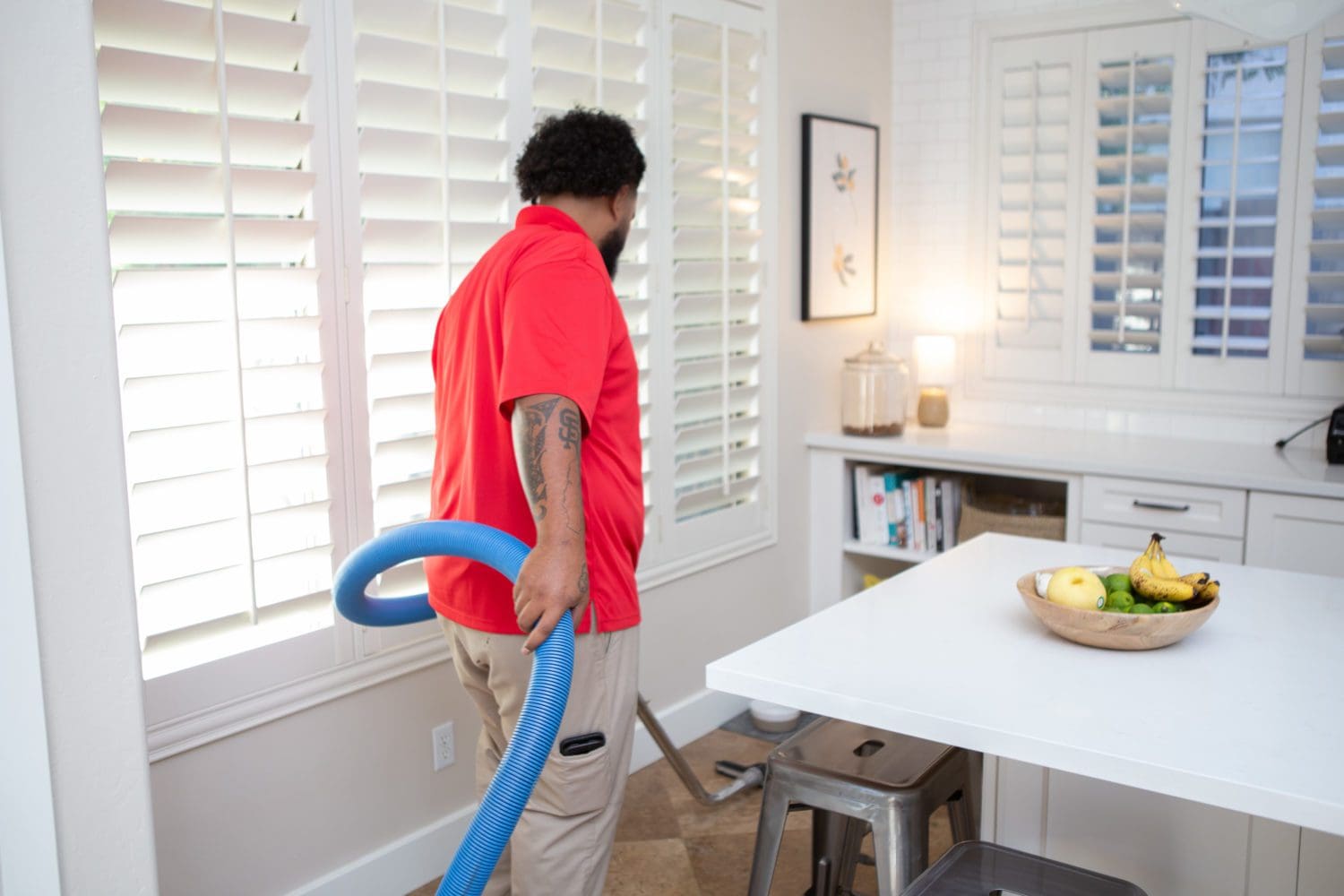Contact Us

6 Ways to Improve Indoor Air Quality
Bumper-to-bumper highway traffic. Billowing industrial smokestacks. These are just a few of the images that spring to mind when we think about air pollution. But what about indoor air pollution? Have you considered how to improve indoor air quality in your home?
The truth is, air pollution in your home can be just as bad – or even worse – than it is outdoors. And with the average American spending 87% of their life indoors, you’d think that indoor air quality would be something we’d hear about more often. But don’t panic! With a little preventative maintenance and some basic knowledge, you can take immediate steps to improve indoor air quality today.
Common air pollutants
Here are 6 things you can do now to improve indoor air quality in your home:
-
Change your AC filter
In Arizona, we rely on air-conditioning systems to give homes that perfect temperature year-round. But while they’re cycling through all that air, they’re also filtering out some of those common air pollutants. To improve indoor air quality, it’s essential to maintain these systems. Eventually, their air filters fill up, and stop doing their job. Not only does that cause trouble for your indoor air quality, but it also wears down your AC system, leading to costly repairs down the road.
So, be sure to change your AC filters regularly – especially if you are allergy-prone or live in a metropolitan area with high levels of pollution. Improving indoor air quality by maintaining your AC system can make a significant difference in your home’s overall air quality
-
Don’t forget about other air filters
Your AC filter isn’t the only thing working to keep the air clean in your home environment. If you want to improve the air quality in your home, be sure to check the filters in your other household appliances. Your vacuum cleaner, clothes dryer, and kitchen vents should all be inspected and maintained periodically. It’s wise to clean or replace these common household filters every few months.
-
Check your air ducts
-
Use cooking vents
Many indoor air pollutants come from the kitchen. Gas stoves release harmful contaminants, including carbon monoxide and nitrogen dioxide. Even electric burners produce those same pollutants in lower levels, as well as other particles that can be easily absorbed into your bloodstream. So, when you’re cooking, be sure to turn on your kitchen vents, or open a window to help filter out the air even more.
-
Control humidity in your home
Humid and moist conditions breed mold and mildew that can trigger respiratory issues like allergies and asthma. In the southwest, monsoon season can create unwelcome humidity or even lead to water damage in the home. Reduce the amount of moisture in the air and curb the growth of irritating molds with a few well-placed dehumidifiers. If you’ve had water damage from a storm, leak, or another disaster, it’s essential to consult a professional remediator to ensure all moisture has been fully removed.
-
Buy indoor plants to freshen the air
Need help?
Keeping the air in your home pure and breathable requires diligence and preventative maintenance. If you are concerned about your indoor air quality, consider setting up an appointment with a National First Response professional. In addition to emergency restoration, we offer a full range of services and are here to keep your home healthy. Get in touch today and breathe easy knowing the air in your home is clean and safe.
